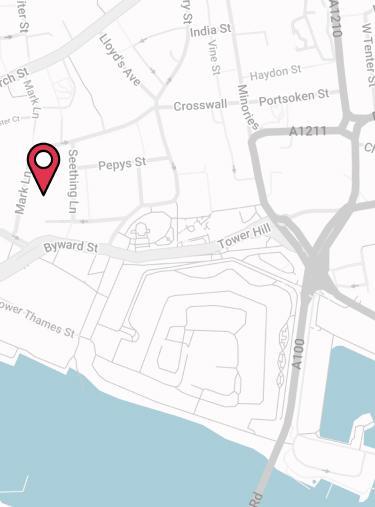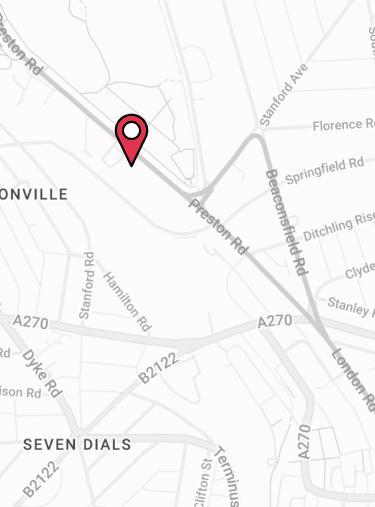In a fiercely competitive job market, Total Reward is a solution many companies are turning to. Employers are strategically thinking about the benefits and recognition they offer their staff. But why?
A comprehensive, well thought out employee benefits package helps to attract and retain top talent. Not only this, it can help to push forward company wide goals and create a positive workplace culture. However, without effective communication even the best benefits can get overlooked.
For benefits to be effective, staff need to understand what’s available and the value of what’s on offer. This is where Total Reward Statements come in.
Our complete guide takes you through exactly what these are, how you can create your own and how to communicate them with your staff. But firstly, what is Total Reward?
What Is Total Reward?
Total Reward sounds like a complicated term, but it’s not. Put simply, Total Reward relates to the whole value of everything you offer your staff.
Salary, of course, is the most obvious reward for employment. But there are many more things businesses offer their teams. Some rewards will be monetary, others will be non-monetary. To help break this down, these are some of the categories your benefits might fall into:
- Financial Rewards
This is anything where the employee receives a sum of money from you. Salary, bonuses and overtime are the most common financial rewards.
- Non-Financial Rewards
This refers to rewards where the employee receives value, but not in the form of monies paid. For example, annual leave, or a learning and development budget.
- Cash Equivalent Rewards
Some benefits will have a monetary value for the employee, but not as a direct financial reward. This would be a workplace pension or a company health insurance plan.
- Intangible Rewards
Where most rewards are measurable, others are harder to quantify. This could be flexible working arrangements or career progression opportunities. Still, these are an important part of Total Reward.
Of course, this is a non-exhaustive list. But it should help to show what Total Reward refers to.
What Is A Total Reward Strategy?
When looking at Total Rewards, it’s important to look at the bigger picture. If one of your company’s objectives is to reduce absenteeism, then it’s worth considering how your benefits package can help tackle this.
- Do the benefits you offer fit with your company culture?
- Do employees engage with your current benefits?
A Total Rewards Strategy gets you thinking about all these questions. It helps to make your rewards and benefits more effective and aligns them with wider company goals. It outlines why you are implementing benefits as well as how you will implement and promote them. It’s a strategy of taking a holistic view of the compensation, benefits and rewards you offer.
When creating your strategy, there are lots of different factors to consider. As a starting point, you’ll want to think about the following questions:
- Which industry do you operate in? What are the benchmark standards for other employers like you?
- What are your competitors doing differently?
- How would you define your organisation’s goals, values and mission statement?
- Which perks are most important to your staff?
Why Is A Total Reward Strategy Important?
A Total Reward Strategy is important as it provides a holistic view of your rewards and benefits. It takes everything into account. All factors – both internal and external to your business. This helps to ensure that what you offer is cost effective, understood and valued by staff and contributing to hitting company wide objectives.
Now that times are a bit tougher and costs are at an all-time high, companies can’t afford to offer benefits that staff don’t want or need. A strategy helps to give structure to your benefits programme and ensure you and your staff get the most out of what’s on offer.
What Is A Total Reward Statement (TRS)?
Let’s say you’ve implemented your strategy and created your compensation package. The end result of this process will be a Total Reward Statement.
A Total Reward Statement is a document that is sent to each employee – which is unique to them. It brings all the benefits and rewards that they are entitled to all together so they can see the true value of their compensation package.
This is where the real value of a total reward model comes in. Staff will be able to see exactly how much is being invested in them. Having transparency such as this can really make your company stand out from its competitors.
Why Implement Total Reward Statements?
Total Reward Statements not only provide a holistic view of all your benefits, they promote an open and honest culture.
They can show employees just how much you value them as their employer. This can lead to a whole range of other benefits for you and your workforce.
Benefits For Employers
Improved Communication
A recent study by Mercer into employer support during COVID-19 highlighted how vital communication is. The top reason employees gave for a lack of support was not knowing which benefits they had access to. Total Reward Statements show exactly what benefits are on offer. This improves your internal communication and makes it clear how you’re helping employees.
Retention
When staff understand their overall value, they’re less likely to look for a job elsewhere. Of course, it’s always possible for staff to receive an offer with a higher base salary. Being aware of – and engaged with – their full compensation package gives them a strong reason to stay. Keeping the benefits and rewards they value will be a big advantage in their decision.
Competitiveness
Some companies might see Total Reward as an excuse to offset low pay with low-cost employee benefits. Others may not offer a Total Rewards Statement at all. But, if you use a total reward system in the right way, it will support in developing a market leading proposition for your staff and potential hires.
Total Reward Statements show your company’s goals and expectations. They also help deliver the support your staff needs. Driving your team’s success makes you a far more desirable employer in your area.
Improved Business Performance
Your Total Reward strategy helps you to be transparent about your business objectives. This helps your team to perform better and achieve excellence. In turn, high performance from talented individuals drives more successful business outcomes. Not only does this make you a competitive employer, but more competitive in your industry, too.
Benefits For Employees
As well as offering benefits to you as an employer, Total Reward Statements also benefit your employees.
Clarity
Understanding their Total Reward package can help shift an employee’s perspective. Instead of feeling in-the-dark, staff know what benefits they can use. This gives them the assurance that you provide the support they need, and shows how much you value them.
Improved Wellbeing
If people don’t know that you offer certain benefits, they won’t use them. Total Reward Statements provide details of all the benefits and reward elements on offer.
This allows staff to engage with benefits which support their health and wellbeing such as Virtual GP services, Employee Assistance Programmes, physiotherapy and nutritional support.
Confidence In Their Employer
Along with clarity, staff gain greater confidence in you, their employer. A Total Rewards Statement shows your people exactly how much they matter to you. Remember, their value won’t be only in the form of financial rewards.
Providing training, continuing professional development and recognition programs are all valuable rewards. They help employees to envision a successful future at your organisation.
Feeling Valued
Without a Total Reward Statement, it’s easy for workers to underestimate their value, or even not to think about it at all. Showing all you are offering them gives staff a stronger sense of value and purpose at work.
How can I display benefits that aren't measurable?
Total Reward Statements often break down the total compensation in a pie chart. The biggest slice is generally base salary, with other slices showing bonuses, expenses, and benefits. But, it can be difficult to show the value of benefits like flexible working arrangements.
You might assign a certain value to these benefits based on how important they are to your average staff member. Another option is to list them in a separate section on the statement.
How can employers help their staff understand their Total Rewards Statements?
As we’ve explored, it’s vital for each employee to understand their Total Reward Statement. In particular, younger workers may not understand certain terms or concepts. It’s important that you communicate clearly and openly with your team.
You need to create a space for people to ask their questions, usually with their manager. Remember that each person will have a different combination of salary and benefits, so one-on-one meetings are a great format to explain their Total Reward Statement.
When should I review my Total Reward Statements?
Many of your employee benefits will probably renew annually. So, it makes sense to review your Total Reward Strategy each year, too. This helps you stay aligned with your employees’ needs and your business objectives.
But, if your company undergoes a significant change throughout the year, it could impact your team. This is a great time to review your approach and make adjustments where necessary.
Core Benefits To Include In Your Total Reward Statements
As you can understand, there’s no one-size-fits-all approach to Total Reward. It needs to be tailored to the needs of your business and your staff. And these circumstances will be unique to you. There are several different benefits that you can include.
Pay, Bonus & Car Allowance
The most universal reward is a base salary. You might be paying your staff an hourly rate for their time worked, or an annual salary. Either way, this will be the first – and most significant – building block of your statement.
On top of their basic salary, you might offer your staff bonuses or overtime. These are also shown as a financial reward, as the employee receives the extra sum directly.
Instead of using a company car scheme, you might offer a car allowance. This can help staff maintain a car they already own. This isn’t like an expenses scheme, where you’ll reimburse fuel costs. Instead, you pay the allowance to the employee.
Car allowances are also shown as financial rewards on the Total Reward Statement, as they’re paid alongside salary.
Share Schemes
If you offer your employees shares in your company, this also needs to be included in the Total Reward Statement. Any dividends they’ve received in the past year or quarter can be classified as a financial reward.
Pension Schemes & ISAs
There’s a large range of different schemes for company pensions. Many companies use net pay methods, but salary sacrifice pensions are a popular option. This is because it allows for tax savings for the employer and the employee.
This isn’t a financial reward, as that only refers to benefits that give them a direct sum of money. But, their pension will eventually yield a monetary return, so it’s known as a monetary benefit.
The same can be said for ISAs. If you offer a Workplace ISA, your team members can put money into their savings each month via your payroll.
Some firms choose to match contributions into their employee’s ISAs which can then be added to their Total Reward Statement as a monetary benefit like their workplace pension contributions.
Financial Education
It can be difficult to determine a tangible value for certain benefits. And the term ‘financial education’ can refer to many different things. For example, sharing free webinars and online resources is hard to quantify.
Although, you might offer sessions with a financial advisor through presentations or 121s. You could also pay for access to financial support through apps or other services. If so, these benefits will have a tangible value that you can itemise on your Total Reward Statement.
Group Risk Benefits
There are three different policies under the umbrella of ‘Group Risk’ that you might offer:
- Group Life Insurance
Also known as a “death in service” benefit. Group Life Insurance policies pay out a lump sum in the event an employee passes away while employed by you. The amount can be a multiple of their earnings, such as 4 x their basic annual salary. Or, it might be a fixed sum, for example, £100,000 for all employees.
- Group Critical Illness
If an employee receives a critical diagnosis, this cover will pay out a lump sum. Each insurer has their own list of critical conditions which they cover. The most common claims are for cancer, heart disease and strokes.
- Group Income Protection
As the name suggests, group income protection policies protect your employees’ earnings. A valid claim occurs when they become too sick to work. The claim may last a certain length of time and most insurers offer return-to-work support.
These benefits will be a monetary reward on your Total Reward Statement. This is because group risk benefits come with a potential payout for each employee. It’s also important to remember that group risk providers offer a lot of free additional benefits.
SPECIALIST TIP 🤓
Virtual GP services, counselling, and wellbeing apps often come included. These are important features that enhance the value of group risk policies and that employees need to know about can be included in your Total Reward Statements.
Health & Wellbeing Benefits
There are many health and wellbeing benefits you might offer your team. Depending on budget, many firms choose to offer Group Health Insurance or a Corporate Health Cash Plan or both. These work in distinct and different ways and can complement each other.
Group Health Insurance
Employees are insured to receive treatment at a private hospital. The insurance providers settle the bill directly with the hospital. Staff can receive GP referrals and ongoing treatment for a range of health issues.
Company Health Cash Plan
With a cash plan, staff pay for their medical care up front. This can be either via the NHS or privately. They can then receive a cashback reimbursement for the costs paid, up to the agreed cover limit.
Private medical insurance policies and company health cash plans are also monetary rewards. This is because your employees receive the benefit of free healthcare costs.
Of course, there are other resources you might use to support your team’s wellbeing.
Other Health & Wellbeing Benefits
Some companies offer an on-site gym, or massages, yoga, or meditation in the workplace. You may not be able to quantify these benefits in terms of the value to your workers. But they still need to be included in your Total Reward Statements.
Holiday Entitlement
Offering annual leave is a mandatory benefit in the UK, and it can’t be considered a financial reward. Paid holiday days are non-financial benefits that need to be included on your team’s Total Rewards Statements.
Remember, allowances will vary if you offer a flexible holiday trading scheme. You’ll need to take into account which staff members are buying or selling annual leave. Once you know the value of any extra days’ holiday, make sure it’s included.
Other Benefits To Include In Total Reward Statements
There will be some things that you don’t particularly class as core benefits. This might be because they’re less traditional and not all companies offer them. For example, a beer fridge, pizza Fridays, or a casual dress code.
Some benefits are hard to assign a measurable value, and others are employee-led. However, this doesn’t mean you shouldn’t be highlighting them to your staff. Other benefits / rewards you can include on your Total Reward Statement include:
Employee Discounts
Offering an Employee Discount Scheme helps staff save money on discounts. They can also earn cashback or rewards. Many retailers sign up to discount platforms. This makes it useful for everyday shopping and luxury purchases alike. The real value of a reward like this comes from how many employees engage with this benefit.
Your employee benefits platform should provide data on the engagement levels. If people aren’t using it, it may be that you need to communicate the benefit more effectively. Or, it could be a sign that you need to review your Total Reward Strategy.
Salary Sacrifice Benefits
Benefits available through Salary Sacrifice are also employee-led. It’s up to each person if they opt into a salary sacrifice scheme. They might use it for holiday trading, new technology, or an electric vehicle. Each employee needs to know what these benefits are and how it will impact their pay.
It’s vital that your staff understand salary sacrifice. Members can only engage with their benefits when they fully understand them. Their use of these schemes will be unique to them, based on their earnings and expenses, and can help them save a significant amount of tax.
Learning & Development Budget
Continuing professional development is a requirement for many roles. Often, the value of learning & development comes in the form of new knowledge. Employees might be keeping their skill set relevant, or preparing for career progression. In these cases, it can be difficult to represent the true value of this benefit.
What you can do is display any courses and qualifications your company is footing the bill for. This evidences how much you’re investing in your team. Doing so will go a long way towards showing staff how invested you are in their future.
Praise & Recognition Tools
Giving your employees appreciation through recognition is a fantastic way of showing staff they’re valued. However, it’s an element of your company culture that can’t really be measured. Nevertheless, your Total Reward Statement should have a section for Intangible Rewards.
Flexible Working Arrangements
Much like recognition tools, flexible arrangements can be impossible to quantify. The value of a casual dress code or hybrid working can be often overlooked. It’s important to remind staff that these enhance the value of their employment.
You might provide lots of benefits and rewards that enhance your cultural value. Make sure you include these as an intangible benefit.
Are there any drawbacks to Total Rewards Statements?
As with everything in life, there are pros and cons. The main drawbacks are around staff being disengaged with their rewards statement. This can be avoided when employees are able to give their input around what perks and benefits they need or would like.
It is important to ensure there is good communication around the Total reward statements to ensure employees understand them and don’t get overwhelmed with the options available to them.
How can I keep my employees engaged with their TRS throughout the year?
This will relate to your strategies around wellbeing and internal communication. One option is to promote different benefits depending on their relevance throughout the year.
For example, you might remind staff about health and wellbeing benefits in January when many people take up new exercise hobbies. Or, reinforce the employee discounts each year in November or December when many people ramp up their festive spending.
It’s best to think about what kind of communication your team needs; for example, email blasts, meetings, or performance meetings. Whatever you choose, regular reminders are a great way to increase employee engagement.
How much does it cost to issue Total Rewards Statements?
It depends on the route you take. If you put the statements together manually, it will take a lot of time for the person or team responsible. You’ll also have to make updates when anyone’s salary or benefits change.
These work hours will add up to a significant cost. Many companies find their best bet is to opt for an effective employee benefits platform that takes a lot of the time, stress and admin off your hands.
How To Create A Total Reward Statement
A Total Reward Statement can be drawn up in two different ways. The first option is for employers to do this on their own, manually. The second is to use an employee benefits platform such as our My.Drewberry platform.
The My.Drewberry platform gives your employees one way to view and manage all their benefits. Often, people try to hold on to emails, attachments, and notes from different sources. These can often get misplaced, and it’s easy to forget what benefits you have access to.
My.Drewberry brings everything together. Using the platform allows your team to do all of the following things on one centralised web page:
- View and manage their workplace pension
- Access all their employee benefits, policy documents, and contact details for claims
- Opt into any salary sacrifice schemes
- Use shopping discounts, and earn cashback or rewards
- Give and receive recognition from colleagues for going above and beyond
- And of course, access their Total Reward Statement.
SPECIALIST TIP 🤓
The platform has a secure log-in tied to each employee’s email address. This means all their data is completely confidential. This eliminates a lot of the pains that can come with drawing up a Total Reward Statement on your own.
Manual Vs Digital Total Reward Statements
A manual Total Reward Statement requires a lot of admin and can be very time consuming. You’ll need to pull a lot of data from your HR systems and make sure it’s correct for every individual. This can be costly if you don’t already have the appropriate software in place. In fact, companies who produce Total Reward Statements in-house often have a full-time person or a small team dedicated to it.
You’ll also need to think about how you’re issuing your Total Reward Statements. Online statements are best for meeting sustainability initiatives and achieving environmental goals. Most importantly, you’ll also need a clear process in place to make sure all the data you are handling is secure and accurate.
Using a digital platform like My.Drewberry for your Total Reward Statements helps to make it a very efficient process.
Example Of Total Reward Statement
A Total Reward Statement on our My.Drewberry portal will look something like this:
![Total Reward Statement Example]()
You can start to see just how powerful Total Reward Statements are. In the above, although the employee’s annual salary is £25,000, when you include all the additional rewards and benefits, this quickly goes up to £41,500.
That’s an additional £16,500 being invested on top of their annual salary. Without giving such a clear overview via a Total Reward Statement it’s easy to overlook the value of what’s on offer.
How To Communicate Your Total Reward Statements?
It’s important to clearly communicate all the rewards you provide to your team. You also need to make it easy for them to access the benefits they want to use.
It’s best to make people aware of their Total Reward Statement with a robust communication strategy. So, you’ll need to think about the channels you want to use to get the word out.
You could email staff a month before making their Total Reward Statements available. Then, you might send a follow-up email the week before they’re released. You might even highlight the Total Reward Statement availability in staff meetings or 1-2-1s.
You’ll also want to reinforce the total reward value at regular intervals. This could be at certain milestones when people think about reviewing their circumstances, such as:
- At the end of each quarter
- In April, at the start of a new financial year
- During your employees’ performance reviews.
In a cost of living crisis, people are more likely to review their circumstances. So, some employees might ask to have conversations around their pay and benefits. This can be a great opportunity to reinforce your total rewards offering.
How To Measure Success
The likelihood is, if you have implemented Total Reward Statements, you will have put together a Total Reward Strategy.
You will have crafted your employment package from the ground up. You’ve listened to staff’s input and clarified your business objectives. In doing so, you’ve implemented a holistic compensation package.
This means that the levels of employee engagement in your benefits should be high. Higher uptake shows that your workers are taking advantage of their benefits. And that’s exactly what they’re there for.
If engagement remains low for certain benefits, even with Total Reward Statements, it suggests you need to review them. It might be that employees don’t find them valuable. If this is the case, you can review and implement an alternative.
Get Specialist Help Setting Up Your Total Reward Platform
Using a Total Reward strategy can be a complex undertaking with a lot to consider. And putting together a holistic benefits package will depend on many factors. Your industry, business objectives and budget will all come into play.
Whether you’re beginning your Total Reward approach, or you’ve had one in place for some time, our team can help. They can talk you through all the elements involved and recommend the best options for your team.
Why Speak to Us?
Employee benefits can be a headache. But our specialists do this day-in, day-out, offering first class service when you need it most. Here’s why you should talk to us:
- Award-winning independent employee benefits consultants, working with leading UK insurers and benefit providers
- Assigned specialist on hand to help – every step of the way
- 4074 and growing independent client reviews rating us at 4.92 / 5
- Authorised and regulated by the Financial Conduct Authority. Find us on the financial services register
- Claims support when you need it most.












